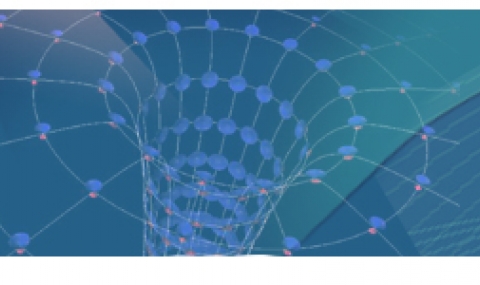13.2.2012
- Here is a short exercise sheet for anyone who doesn’t feel comfortable with expanding functions into power series (this is for your benefit only, there is of course no need to submit it).
- Some people requested references on fluctuations, Langevin equations, Fokker-Planck equations, etc.. In addition to Sethna’s book mentioned below, you may find these lecture notes of Itzhak Fouxon useful. These notes present the material in a spirit similar to what was taught in class. In Fouxon’s course website you will also find a list of the standard textbooks on the subject.
7.2.2012
- On Monday 13.2, at 11:15 we’re going to have a review tutorial in which I will present the solution of homework 7. In addition, if you have any questions or topics you would like Or or myself to review before the exam, please send them to us in advance so that we can prepare them. The tutorial will take place in the Weismann auditorium.
- The deadline of submission of homework 7 is the beginning of this tutorial. If you are not planning on coming to the tutorial, please submit the homework at an earlier occasion. Submission of this homework is mandatory, and we will not be able to accept late submissions.
2.2.2012
- Homework sheet 7, due date will be announced soon.
Tutorial 12: 26.1.2012
- Reading material:
- General information on phase transitions (what they are, 1st vs. 2nd order, etc.), and a discussion of Landau theory, appear in any standard textbook on statistical mechanics (e.g., Pathria). A book particularly recommended is Goldenfeld, Lectures on phase transitions and the renormalization group.
- For information on the Ginzburg criterion and upper critical dimensions, see Goldenfeld’s book, and also Als-Nielsen & Birgeneau, Am. J. Phys., 1977. A discussion of critical exponents in long-range interacting systems can be found in section 1.3.2 of this set of lecture notes by David Mukamel ,(you may find the entire section 1.3 interesting).
Tutorial 11: 19.1.2012
- Homework sheet 6, including correction to Q 6.4 - 30/01/12, due 2.2.2012
- For those who wish to solve question 6.5 but can only program in matlab, please download and unzip the following file, and follow the instructions in the enclosed pdf file.
Tutorial 9: 1.1.2012, Fluctuation-Dissipation theorem
- Reading material:
- Fluctuation-Dissipation theorem: Chapter 10 of Jim Sethna’s book, Statistical Mechanics: Entropy, Order Parameters, and Complexity
- Onsager’s reciprocity relations: Chapters 33-34 of Kittel’s “Elementary statistical physics”
- For those who want to learn more about linear response theory (the general theory of near equilibrium systems), you can take a look at this review article by Kubo, (also available here), or at the book by Kubo, Toda & Hashitsume, “Statistical Physics II: nonequilibrium statistical mechanics”.
- Homework sheet 5, due 19.1.2012
Tutorial 8: 29.12.2011, Mote Carlo Simulations
- Reading material:
- Landau and Binder, “A guide to Monte Carlo simulations in statistical physics”
- Newman and Barkema, “Monte Carlo methods in statistical physics”
- Krauth, “Statistical Mechanics: Algorithms and Computations”
- Krauth, “Introduction to Monte Carlo Algorithms”
- You’ll find many examples in Gould and Tobochnick.
Tutorial 7: 22.12.2011, Transfer Matrix method
- Reading material:
- Pathria, Section 12.1
- Homework sheet 4, due to 05.01.2012. This version includes a correction to Eqs. (2), (4) (31/12/11). Q1d and Q3b has been rephrased in order to clarify what you are required to find.
Tutorial 6: 15.12.2011, Shannon source code theorem and thermodynamic fluctuations
- Reading material:
- MacKay, pp. 67-84
- Landau & Lifshitz, sections 112-113
- Mathematica demonstration of Shannon source code for the case of biased coin tossing. Those who don’t have Wolfram Methematica installed can download a player for free at http://www.wolfram.com/products/player/.
- he submission of exercise 3 is delayed to Sunday 25.12 afternoon at my office (room 253).
Tutorial 5: 08.12.2011, Cramér’s theorem and Maximal entropy
- Reading material:
- Lecture notes, section 4.3.
- Huge Touchette, Introduction to large deviations, section 1
- Kardar, Statistical Theory of particles, question 2.6.
- Homework sheet 3, due 22.12.2011
Please write your homework in English and write down your ID number. - Mathematica demonstration of the LDP of a binomial distribution and for expontial i.i.d.’s . Those who don’t have Wolfram Methematica installed can download a player for free at http://www.wolfram.com/products/player/.
Tutorial 4: 01.12.2011, Large Deviations
- Reading material:
- Lecture notes, section 4.3.
- Huge Touchette, Introduction to large deviations, section 1
Tutorial 3: 24.11.2011, Chemical Reactions
- Reading material:
- Landau & Lifshitz, sections 101-104
- Example of a chemical reaction H2->2H
- Homework sheet 2, due 8.12.2011
Please write the homework in English.
Tutorial 2: 17.11.2011, Diamagnetism
- Reading material:
- Magnetism in general - Landau & Lifshitz, section 52
- Diamagnetism, classical & quantum high temp. - Peierls, Surprises in Theoretical Physics, section 4.3; Landau & Lifshitz, section 59
- Haas van Alphen effect - Huang section 11.4.
In Landau & Lifshitz, section 60, you’ll find the full solution with the Poisson summation formula.
- Corrections:
- In the end of the session I wrote χ = d2F/dM2, which should have of course been χ = -N-1(d2F/dB2).
- Clarification regarding the stationary wave method presented last week
Tutorial 1: 10.11.2011, Molecular Collisions
- Homework policy
- Home exercise 1, due 24.11.2011
- Reading material:
- Equation of state - Kubo, p. 32
- Poisson’s adiabatic - problems in Kubo pp. 67, 87; Landau & Lifshitz, section 43


